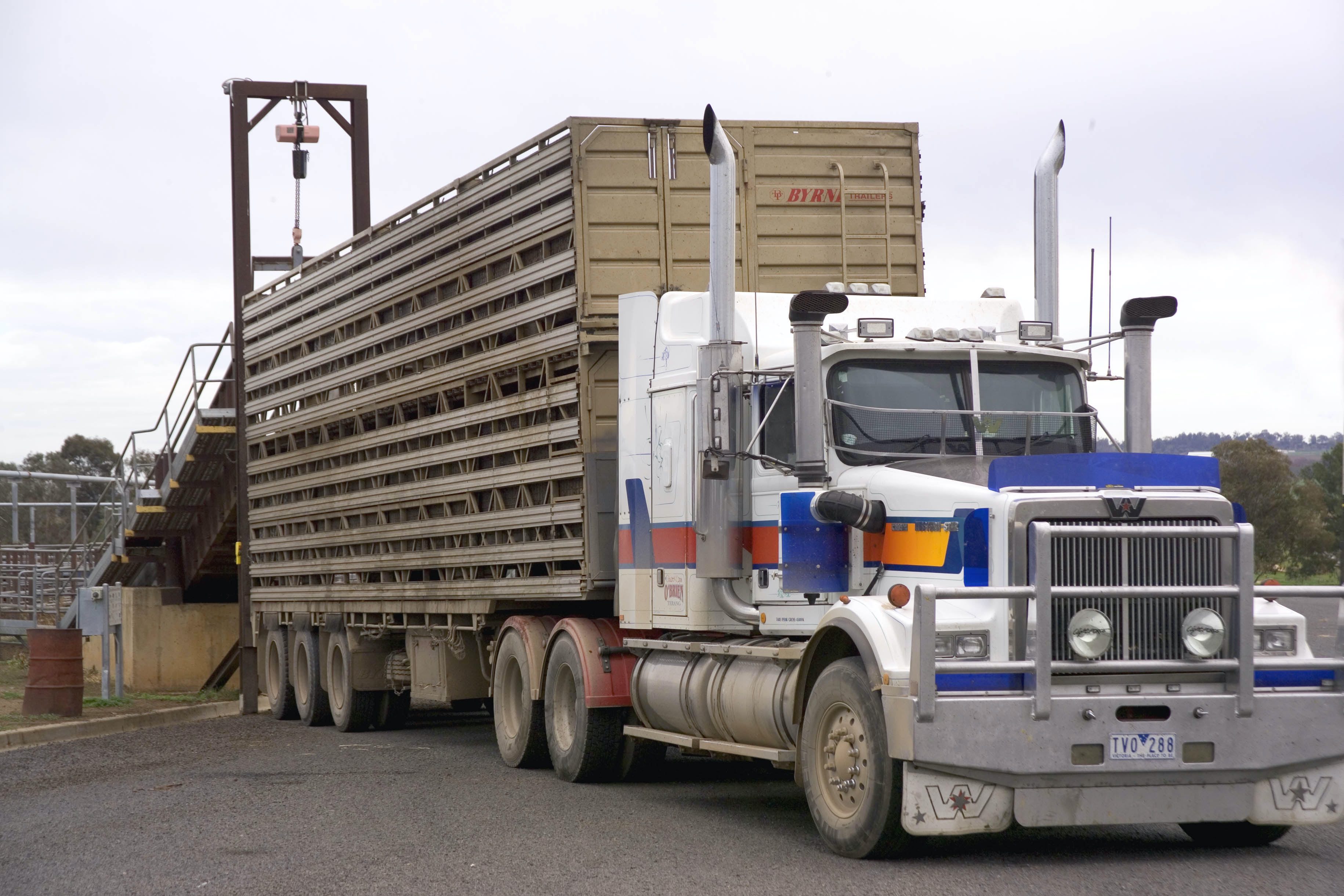Livestock movements
Find up to date information about Livestock Movement requirements.
General information
- Cattle Underpass Scheme (CUPS)
Supports Farmers to construct underpases, to reduce risks to motorists, and livestock to allow movement from paddock to paddock/ facilities. - NLIS Cattle
Link to NLIS Cattle page for further information. - NLIS Sheep & Goats
Link to NLIS Sheep and goats page for further information. - NSW Animal Welfare Code of Practice No 1 - Companion Animal Transport Agencies
This code is designed for everyone involved in the business of companion animal transportation (pet transport services). - Prevention of Cruelty to Animals (Land Transport of Livestock) Standards 2013
New Standards for Land Transport of Livestock in NSW took effect from 14 June 2013 with the Prevention of Cruelty to Animals Amendment (Animal Trades) Regulation 2013. - Underpasses for moving livestock under expressways
This Primefact discusses aspects of the design of livestock underpasses under expressways. - Glovebox Guide - Biosecurity, Emergency Animal Diseases and preparing livestock for transport
This Glovebox Guide was developed to assist livestock transporters in performing their vital role in the livestock market chain. - Livestock movements in emergencies – NLIS and General Biosecurity Duty
This procedure outlines how the NLIS requirements and the General Biosecurity Duty (GBD) can be met in emergency livestock movement situations caused by bushfire, flood, or other emergencies.
Moving led and tractable stock into NSW from QLD
- Important booking information for users of Mt Lindesay and Kirra Livestock Treatment Facilities
Information regarding Cattle tick and livestock movements.
Moving animals into and within NSW
- Moving alpacas, camels and other camelids into and within NSW
Compliance Procedures for Property Identification codes NLIS. - Moving cattle into and within NSW
Understand the requirements for moving cattle including pets, poddy calves, buffalo, bison, beef and dairy cattle into NSW. - Moving pets, native and non-indigenous animals into and within NSW
Requirement information for native and non-native species, welfare requirements for pets and emergency animal diseases. - Moving sheep into and within NSW
Understand the requirements for moving sheep, including pets, poddy lambs, dairy, wool and meat sheep which must meet certain movement requirements within NSW. - Moving poultry into and within NSW
Understand the requirements for moving poultry into or within NSW. - Moving goats into and within NSW
Understand the requirements for moving goats including pets, farmed goats, dairy, miniature or earless goats into and within NSW. - Moving pigs into and within NSW
Understand the requirements for moving all pigs including pets into and within NSW.
Interstate livestock movements
- Victoria DPI - Livestock entry requirements for Victoria
- Queensland Primary Industries - Livestock entry requirements for Queensland
- Western Australia Agriculture and Food - Livestock entry requirements
- Biosecurity South Australia - Livestock entry requirement
- Northern Territory Department of Resources - Primary Industry - Livestock entry requirements
- Tasmania DPI - Livestock entry requirements
Livestock export
- NSW Health Certification for the export of livestock and other animals
Information on exporting live animals from Australia can be found on the Department of Agriculture's website: Exporting from Australia.
Documentation
- National Goat health statement
A national Goat Health Declaration is available from the Farm Biosecurity website. - Transported stock statement (TSS): Q&A
Frequently asked questions about the TSS. - Sheep Health Statement
The National Sheep Health Statement is an important tool for assessing the health status and management history of a mob of sheep. - Primefact 940 OJD: The national sheep health statement
The national Sheep Health Statement is the key to understanding OJD (ovine Johne’s disease) risk when trading sheep.
Policy
- Livestock Traceability Policy
The National Livestock Identification System (NLIS) underpins access of Australian livestock products to international markets. NLIS allows for traceability of livestock through a combination of permanent identifiers, movement documents and database records.
